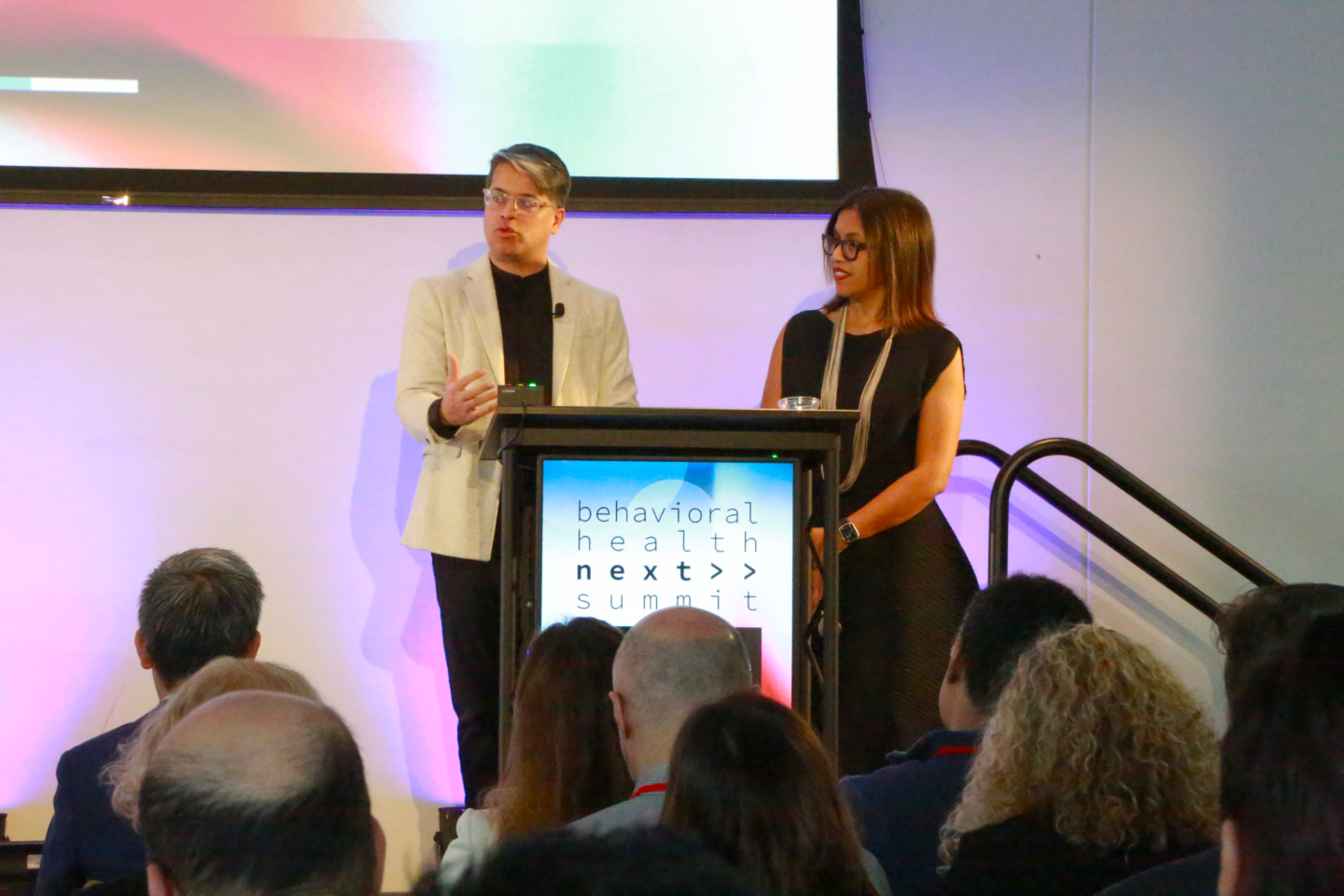Mining Our Digital Traces For Early Indications of Alzheimer’s
Categories

Each day, technology stores a massive collection of our text-based communications. Renee Zacharowicz and Travis Allen, both Technion-Cornell Dual Master’s Degrees in Health Tech ’19, researched how these “digital traces” might be mined to detect a decline in language performance that could be an early indicator of Alzheimer’s for their specialization project, a requirement of all Jacobs Technion-Cornell Institute students.
The pair share a personal interest in the topic. Allen’s Product Studio challenge focused on detection of the disease and Zacharowicz’s grandmother was an Alzheimer’s sufferer. “It was a traumatic experience to watch her progressively decline; to see somebody trapped in their own deteriorating mind,” she said.
Working together on their specialization project, Zacharowicz and Allen set themselves a challenge, “How could we leverage passive data collection to tell us about our thinking and our cognitive abilities, and then use that to try to detect cognitive decline?”
Allen explains that they started with a “big picture goal” of producing an algorithm to understand an individual’s writing patterns–mined from emails for example–and monitor them for changes that are indicative of language decline. First, however, they needed to establish proof-of-concept baselines.
The intersection of tech and healthcare
Zacharowicz and Allen worked with their faculty adviser, Associate Dean and Robert V. Tishman ’37 Professor Deborah Estrin, PhD student Max Grusky, and developed a research partnership with Dr. Richard Isaacson, director of the Alzheimer’s Prevention Clinic at Weill Cornell Medicine. This connection gave the pair access to a group of patients who had already been diagnosed with the disease, or who had biological markers and/or family histories that put them at risk.
Such a partnership — between a technology campus and a hospital with access to real patient data — could only happen at Cornell Tech, notes Allen.
Zacharowicz and Allen then devised a memory prompt that could be used to generate writing samples from the two groups. “We constructed a prompt which was posted on AlzU users’ activities dashboard as well as incorporated in the clinic participants’ periodic survey,” said Zacharowicz.
In modeling their prompt, the pair were inspired by the Nun Study, a seminal work led by epidemiologist and neurology professor, David A. Snowden, that enmeshes language with Alzheimer’s. The longitudinal study was started in 1986 when Snowden was based at the University of Minnesota and draws on the diary entries, medical records, and personal histories of 678 nuns from the School Sisters of Notre Dame. By analyzing language use in the sister’s diaries, researchers have been able to show how writing is strongly correlated to Alzheimer’s in later life.
Zacharowicz and Allen’s own autobiographical writing prompt read: “Write a short sketch about a memory from your childhood and why it is memorable or important to you.”
Mining data for signs of decline
The prompts and resultant writing samples gave Zacharowicz and Allen two datasets to mine: one from the clinic and a larger one from AlzU. These were analyzed alongside other data, such as surveys and neurocognitive assessments. The pair investigated text features, such as response size, sentence count, and vocabulary size. They were able to show “a statistically significant correlation with language assessment scores,” said Zacharowicz.
“We were able to demonstrate that there is a strong correlation between features of our writing and text, and our language performance,” said Zacharowicz. As language performance and decline can be an early indicator of Alzheimer’s, flagging up changes in our everyday “digital traces” could alert people when it is time to seek medical advice.
Their work is on-going and the next step is to produce more robust datasets that include other forms of text, such as emails. However, the initial findings could have exciting real-life applications, said Zacharowicz, “The dream would be for a user to have a plug-in on their browser that can learn their [writing] pattern over time and that could detect when there is significant decline.”
Media Highlights
Tech Policy Press
Content Moderation, Encryption, and the LawRELATED STORIES





